Being an interior design professional and frequent visitor to the fair, I have witnessed the industry go from a Mordoresque industrial wasteland almost completely devoid of green ambition, to a place where suddenly something big is on the move – the awakening of a more conscious world. But unlike past movements in the design industry, sustainability is no trend – it is a global machinery powered by our instinct to survive.
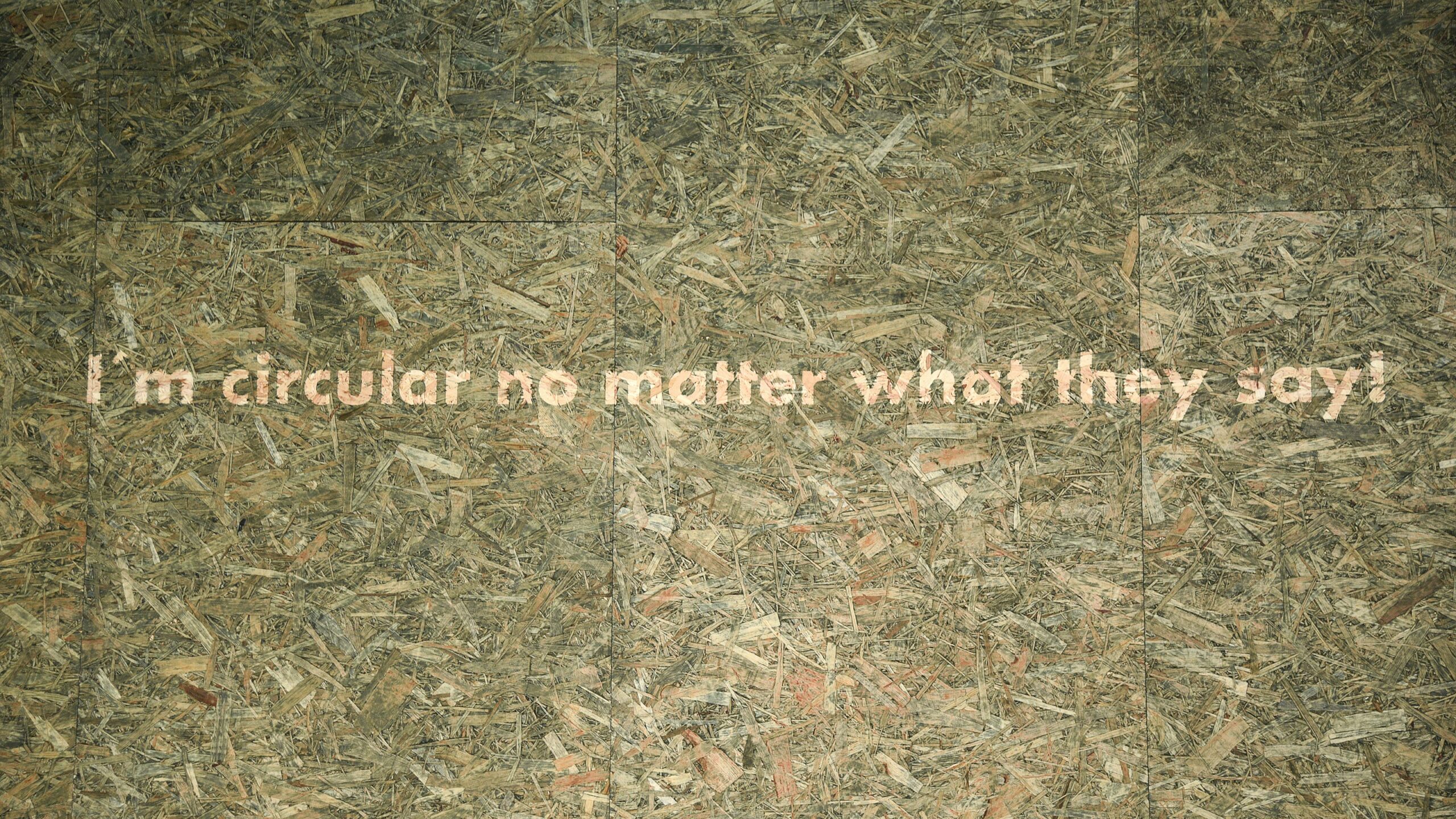
Stockholm Furniture Fair 2019 through the looking glass
Stockholm in February is a cold freckle in the face of a feverish world. It’s Design Week, the world’s biggest event in Scandinavian design and Stockholm Furniture Fair is the epicenter of it all.
As an interior designer, time is my employer. With the passing of time comes the passing of materials. We live in a world, completely relying on regeneration, to uphold existence. The human body regenerates itself in eight years on a cellular level. When a cell dies another must take its place, still keeping the body in an unaffected state – basically, we die and are reborn piece by piece every day. To be able to die is the agent of eternal life and this rule of nature applies all things spanning from humans, plants, popstar careers, companies, cities and design. It is the final blueprint of sustainable design.
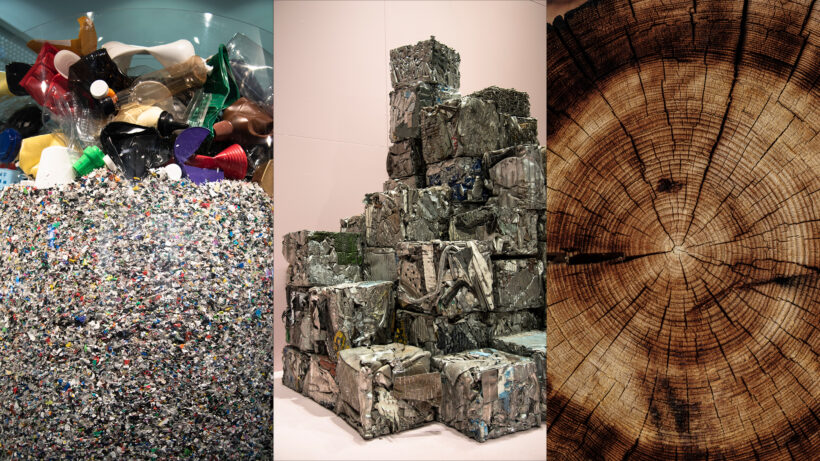
Materials from Stockholm Furniture Fair by Houe and Flokk Design.
Companies such as Sajkla and Rekomo are two frontrunners furthering the use of old and refurbished furniture and materials. Re-use is the single most energy-saving and emission-reducing strategy when designing interiors and it saves money. Clients may very well see the cost of their new interior drop by 20-40 %. A win-win situation if I ever saw one.
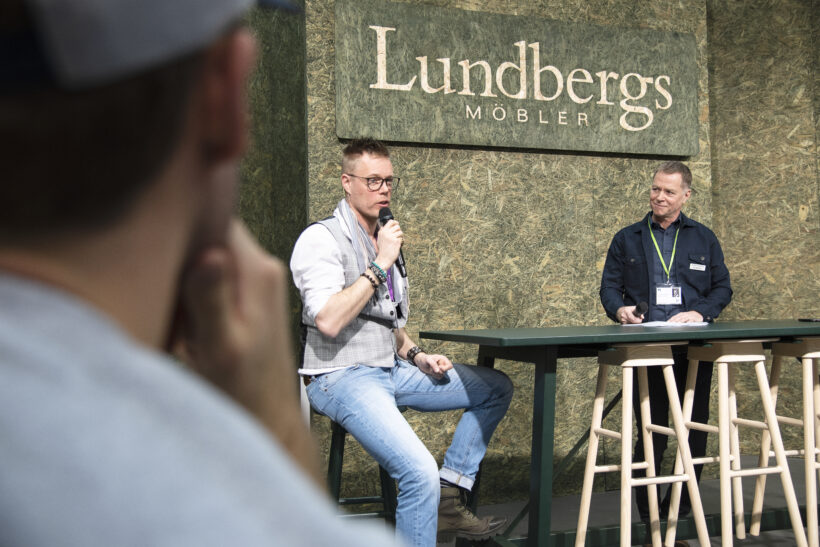
Our recycled stand with Sajkla for Lundbergs Möbler. Interior design by Kristofer Jonsson.
While some find their place at the end of the material chain, many furniture manufacturers are working tirelessly at the beginning of it. Snøhetta designed a chair for NCP made from 100% plastic waste harvested from the Arctic Ocean and carpet manufacturer Interface have long been making carpets made from plastic waste bought from fishing villages in south east Asia. Reentering it into the material chain is good for the environment and creates job opportunities and cleans up the ocean resulting in the return of marine wildlife. Again, everybody wins.
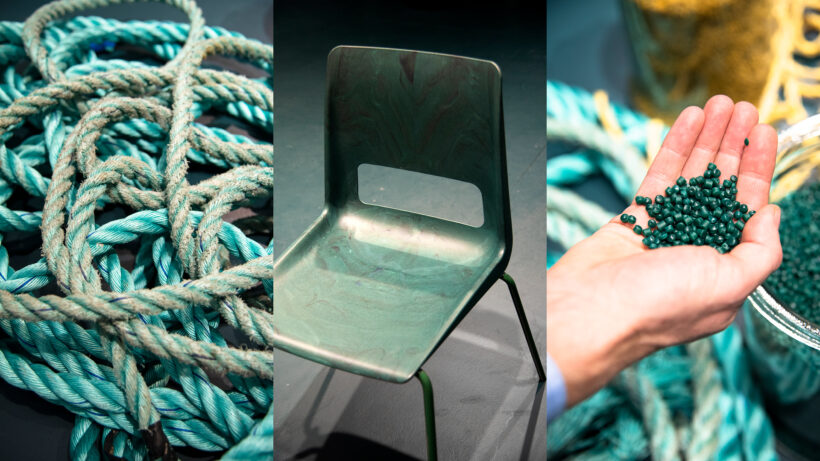
Furniture made from recycled fish farming plastic waste by Snøhetta.
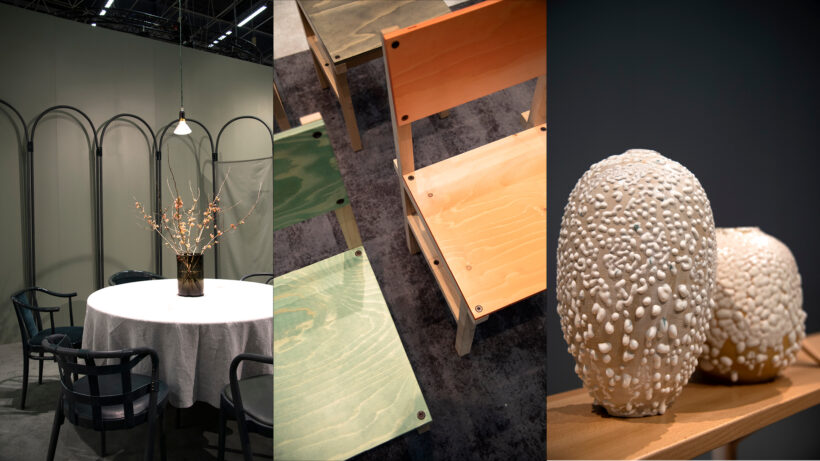
Mix of sustainable goodies from Gemla, Blå Station and Bruno Mathson.
Walking down the aisles of the fair it’s clear that designers have become inventors. Our own designers at White are collaborating with Swedese to re-invent the design process itself and turning it CO2-neutral. Swedish brand Ihreborn is developing a sustainable foam rubber and a number of brands now offer renting as an alternative to buying. Working with brands Lekolar and Lundbergs together with Sajkla, we have designed stands consisting entirely of furniture and materials that will be used in other projects after the fair closes – a different way of making sure the already used materials stay in the loop a tad longer.
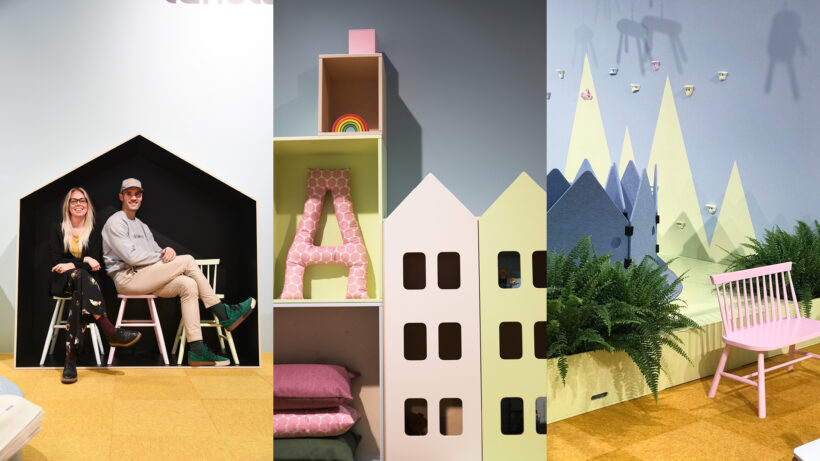
Wonderland is our playful stand for Lekolar. Designed by Johanna Augustsson and I.
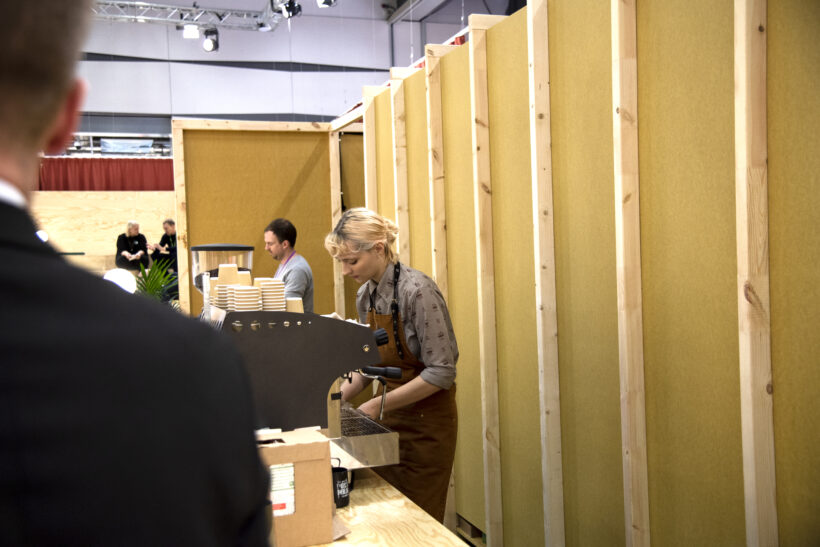
Coffee break at Flokk
Stockholm Furniture Fair is arguably one of the most forward-looking places to be, yet it faces huge challenges. The amount of waste is jaw-dropping. The stands, the design bar and the furniture packaging to name a few things, is often disposed. We must change the way we think and realise what power we actually possess. If our bodies can regenerate on a cellular level in eight years, so can our ideas. Climate experts say we have twelve – so let’s get to it!